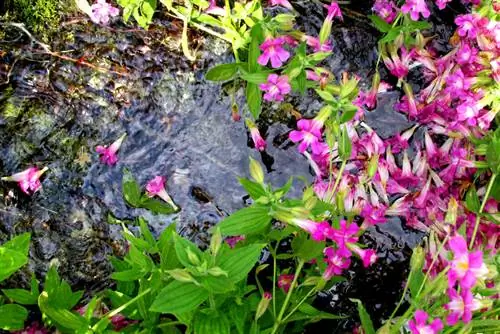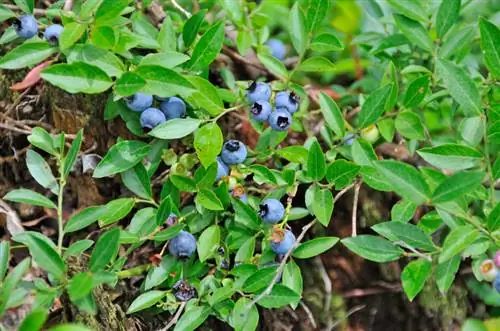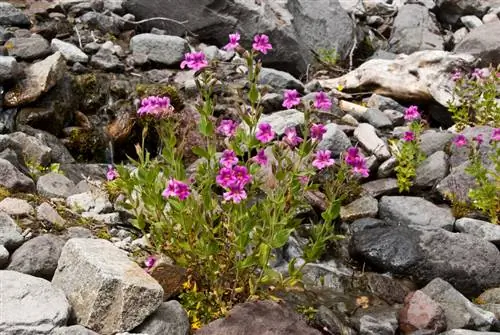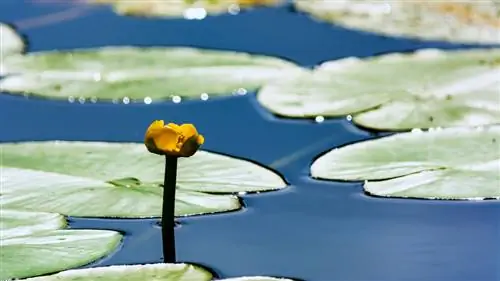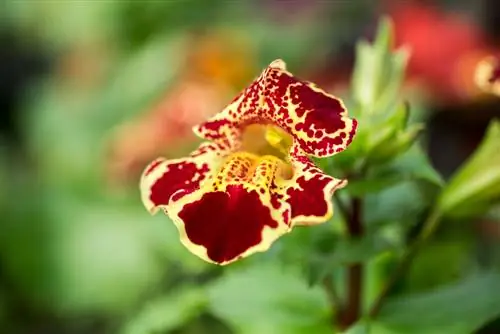- Author admin [email protected].
- Public 2023-12-16 16:46.
- Last modified 2025-01-23 11:20.
The genus of juggler flowers includes a large number of different plants, some of which are annual and some of which are perennials, mostly grow in a herbaceous manner and rarely occur in the form of sub-shrubs. Most of them are terrestrial plants, but some are also aquatic plants.
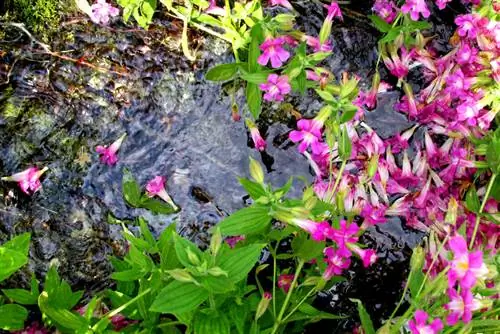
Which juggler flower is suitable for the pond and how do you plant it?
The moisture-loving Mimulus ringens is particularly suitable for a pond flower. Choose a moist, sunny to partially shaded location at the edge of the pond and limit the growth of the runners with stones to prevent overgrowth.
These aquatic plants are also suitable for planting garden ponds and/or artificial streams, among other things. Some can even tolerate their leaves growing under water, others should be planted at the edge of the pond. Basically only the roots are in the water. With blue-violet flowers and a height of around 20 cm, the Mimulus ringens variety is ideal for shallow water zones or swampy areas.
The ideal location for the juggler flower
The majority of juggler flowers prefer moist locations in partial shade or sun. They are originally native to forests or rivers. Only a few species, such as the bright red-flowering Mimulus cardinalis, can tolerate dry soil. When buying, pay attention to whether your juggler flower is hardy, such as the yellow-flowering variety Mimulus luteus, and take care of the correct winter care in good time.
Since the juggler flowers like to spread, it is best to place a few stones that are not too small next to them as a border (€97.00 on Amazon). Otherwise it can happen that the juggler flowers overgrow their smaller neighbors. However, they get along quite well with marsh marigolds and marsh forget-me-nots.
Propagate juggler flowers
The simplest way of propagation is self-sowing. This type of propagation can also be used for the juggler flower. You can transplant the young plants if necessary. This is often easier than collecting the seeds and sowing them in the new location.
Propagation by division is also possible with the juggler flower. The juggler flower forms many runners and spreads very widely without control, pruning or division, even to the detriment of neighboring plants.
The most important tips for choosing a location:
- choose a rather humid location
- Exception: Mimulus cardinalis also grows in dry locations
- sunny to partially shaded
- moisture-loving species also at the edge of the pond
- only plant distinct aquatic plants in the pond
- Possibly limit the growth of the foothills with stones
Tip
For pond planting, choose a variety that is particularly moisture-loving, such as the blue-violet Mimulus ringens.

